Alabama A&M’s FireDawgs Blaze Trail for Diversity in Forestry
 Credit: Photo Courtesy of Stephanie Love
Credit: Photo Courtesy of Stephanie Love- The Alabama A&M University (AAMU) FireDawgs train with the U.S. Forest Service to conduct prescribed burns and put out wildfires.
- AAMU is the only HBCU with an accredited forestry program.
- The Forest Service modeled its wildland fire consortium program after the FireDawgs. The consortium consists of AAMU, Florida A&M University, Southern University in Louisiana, and Tuskegee University in Alabama.
During his college journey, Bradley Massey has been an Auburn University at Montgomery Warhawk and an Alabama A&M Bulldog. Now, he’s a FireDawg — serving as a leader on a student-led forest prescribed burn and firefighting team that protects public lands.
The Alabama A&M University (AAMU) FireDawgs are the first nationally recognized student fire crew from a historically Black college and university (HBCU). The FireDawgs team, headquartered in the university’s forestry program, was established in 2002 and began an official partnership with the U.S. Forest Service (USFS), an agency of the U.S Department of Agriculture (USDA) in 2009.
The FireDawgs’ success has led the USFS to expand its firefighting and training efforts by forming the 1890 Land Grant Institution Wildland Fire Consortium. The consortium includes AAMU, Florida A&M University (FAMU), Southern University in Louisiana, and Tuskegee University in Alabama.
Massey, 27, is in his third year in AAMU’s Forestry, Ecology, and Wildlife Program (FEWP). He grew up right down the street from AAMU but decided to enroll at Auburn University at Montgomery after graduating high school in 2014. He was out of school in 2020 when the COVID-19 pandemic hit and realized that he wanted to leverage his love of hunting and fishing into a career in forestry.
Massey told BestColleges he’s found his calling at AAMU.
He’s the president of the university’s Forestry Club and a USDA 1890 National Scholarship intern for the Forest Service at Talladega National Forest, about an hour south of the university. The 1890 National Scholarship program helps students at HBCUs land jobs with USDA agencies.
“I grew up in Alabama, but I had never visited the Talladega National Forest, so it gave me an opportunity to see this part of the state and the different landmarks that are near this forest,” Massey told BestColleges.

AAMU is the only HBCU with an accredited forestry program, and boasts a 90% job placement rate for graduates. Massey said the program — and his success in it — shows other HBCU students the numerous career opportunities forestry and wildlife management can provide.
“I think the work that I do helps build the momentum in bringing more individuals that may not have the same opportunities as I did growing up and introducing them to the outdoors and showing them the benefits that you can learn out there,” he said. “Whether it is learning about wildlife or their habitat or just trees or just being out there and understanding nature.”
The AAMU FireDawgs: A Student-Led Model for Forestry
There are currently 15 active AAMU FireDawgs. The team primarily conducts free prescribed burns for locals, but they also mobilize to fight wildfires and help with rescues. They often conduct burns on AAMU’s Winfred Thomas Agricultural Research Station, a 972-acre research farm in Hazel Green, just north of Huntsville.
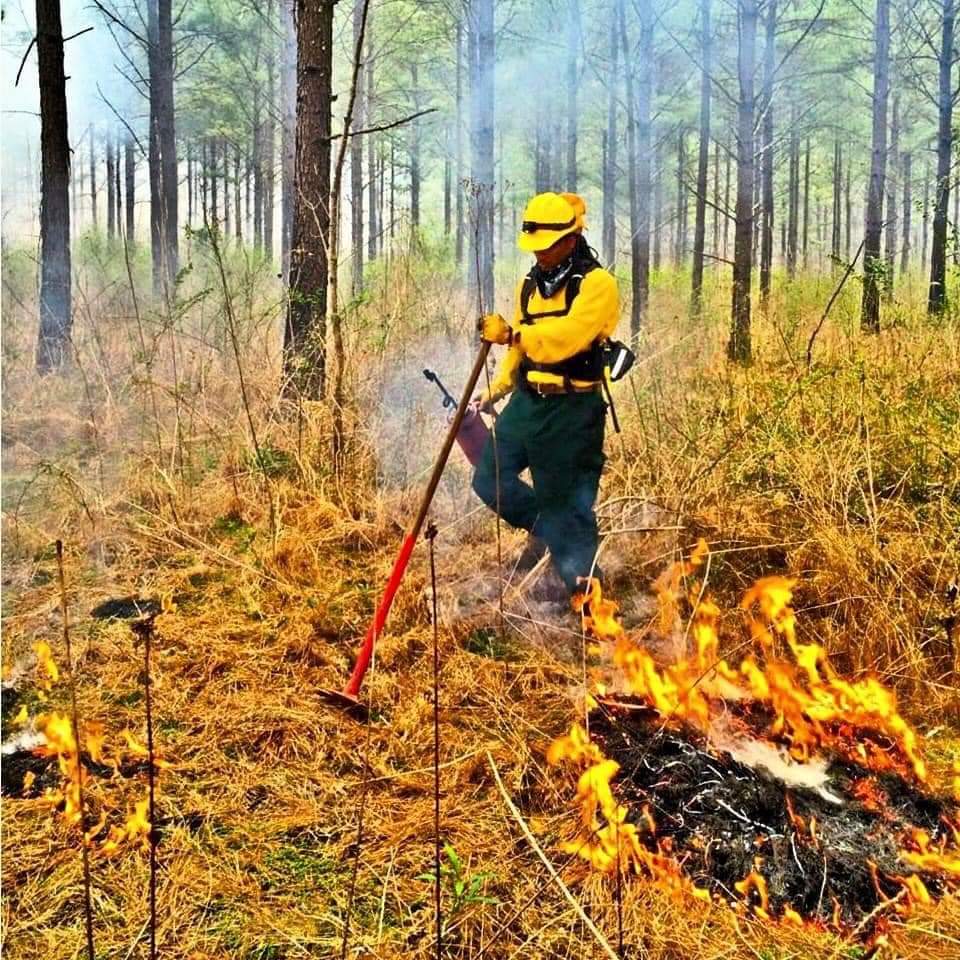
The FireDawgs partner with the Forest Service to provide students experience with wildland fires in various scenarios. The students learn to operate forestry tools like drip torches for prescribed burns and chainsaws.
Massey said his first experience was when a fire erupted on a nearby mountain, and the Alabama Forestry Commission called one of AAMU’s professors to get the FireDawgs to help do cleanup.
“So, that was pretty interesting because I was sitting in my English class, and I just got a text message from my professor,” Massey said.
Massey didn’t answer but became concerned when his professor began calling him.
“Can you help us with this callout,” his professor asked him.
“Yeah, but I’m in class,” Massey said.
“Don’t worry about class; we’ll get you squared away around that.”
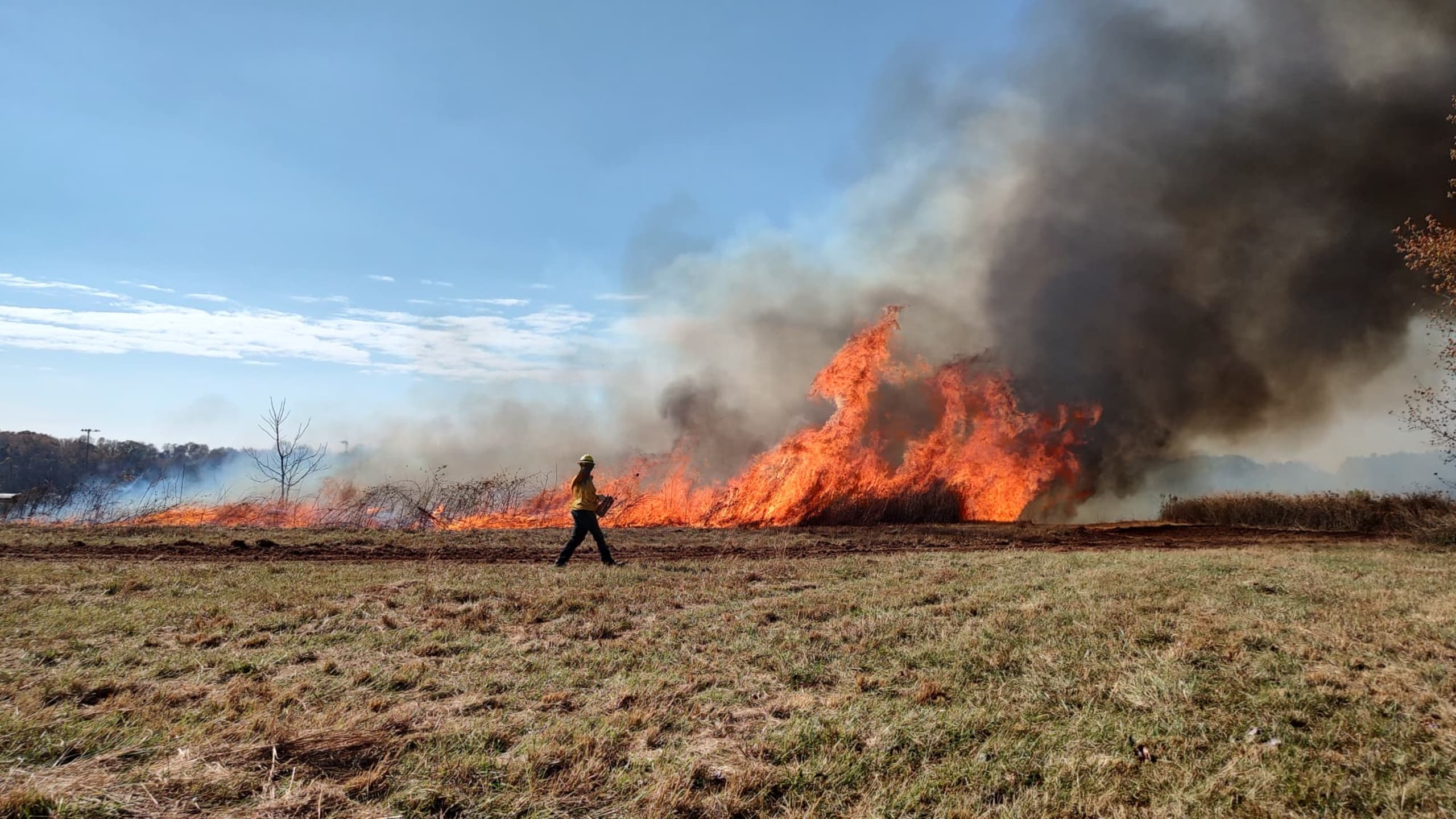
Massey joined the crew to ride up old logging roads as helicopters dropped water over the range. By the time the FireDawgs arrived, all the flames were out, and the land was mostly smoldering and black, so any potential rogue fires couldn’t escape.
Stephanie Love, the USDA Forest Service’s national student diversity programs manager, said students aren’t regularly called out of class, but you can’t schedule a wildfire. So any student who can respond, will. The regular assignments are prescribed burns.
Love was an original FireDawg — she still has her original shirt in a drawer. She graduated from AAMU in 2000 and again from her graduate program in 2004. She came to the Forest Service through a similar program.
She worked in forestry before transitioning to her dream job.
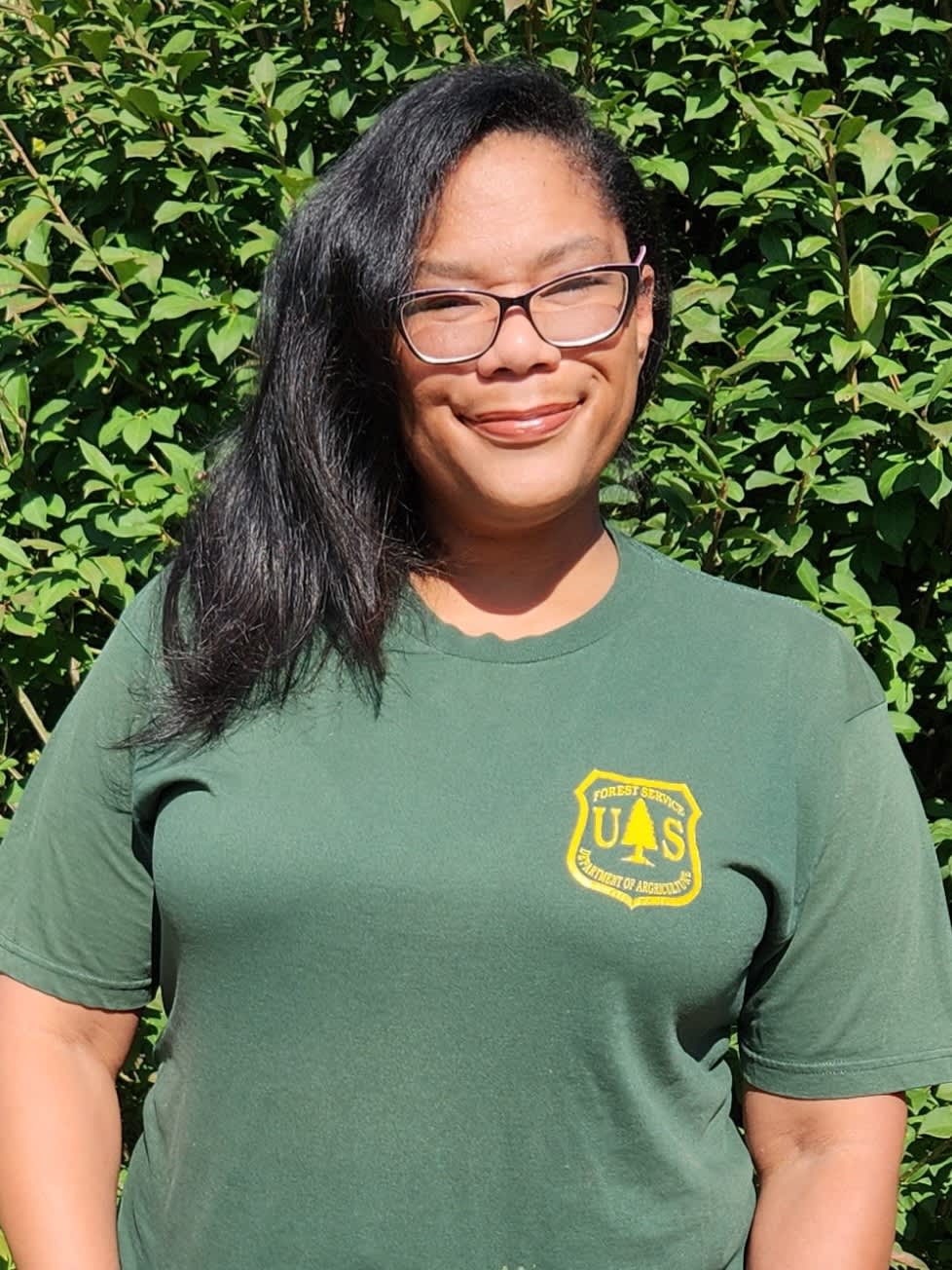
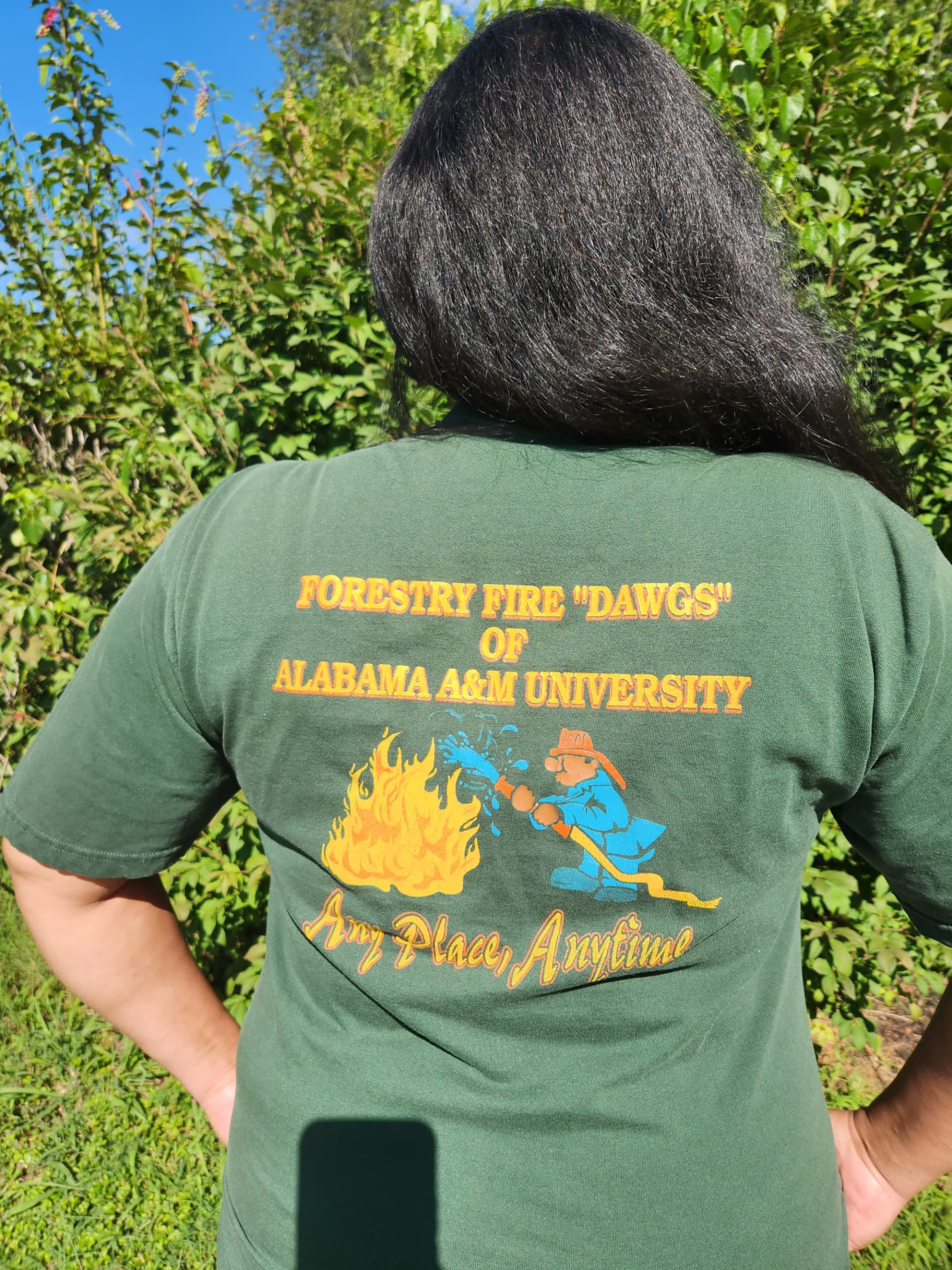
“So I’ve been here for 24 years and just bringing things full circle with these programs and giving opportunities to students like myself who may not have even heard of forestry or wildland firefighting,” Love told BestColleges.
“Well, the FireDawgs chose me,” Love said. “I don’t think anybody on that crew was thinking about forming a firefighting crew.”
She said one day, Alabama A&M forestry students were on a field trip when they noticed a roadside fire. The students jumped out of the van to quench the fire. The news got out, and the FireDawgs were born.
Love said like many students she meets, she didn’t know what forestry was before college. She was an undeclared major and heard about forestry at a seminar.
“I like to be outside. I’ll try that,” Love told herself after the seminar. “And so all of my knowledge that I got about forestry was in school and on the job, and it just stuck. And I really, really love it; I can’t imagine doing anything else.”
She said the USFS wanted to replicate and elevate these student-led programs. The USFS has run a Forestry and Fire apprenticeship program for 10 years.
She and a colleague had the idea to start the HBCU-targeted 1890 Land Grant Institution Wildland Fire Consortium that’s been running for three years.
Once students pass consortium training, they are certified to fight wildland fires. The training increases the FireDawgs’ capacity to tackle local fires and floods. Fire Boss and USFS Fire Management Staff Officer Darrius Truss and Crew Boss and AAMU Fire Chief Jeremy Whigham work fiercely with students and university liaisons from each consortium school.
Love said the USFS has been partnering with the AAMU since 1992 to increase workforce diversity through student programs like the Multicultural Workforce Strategic Initiative, research initiatives, and the Center for Excellence. They’ve helped the USFS establish relationships and work with other HBCUs, and steward grant funds as well.
“It’s running like a well-oiled machine at this point,” Love said.
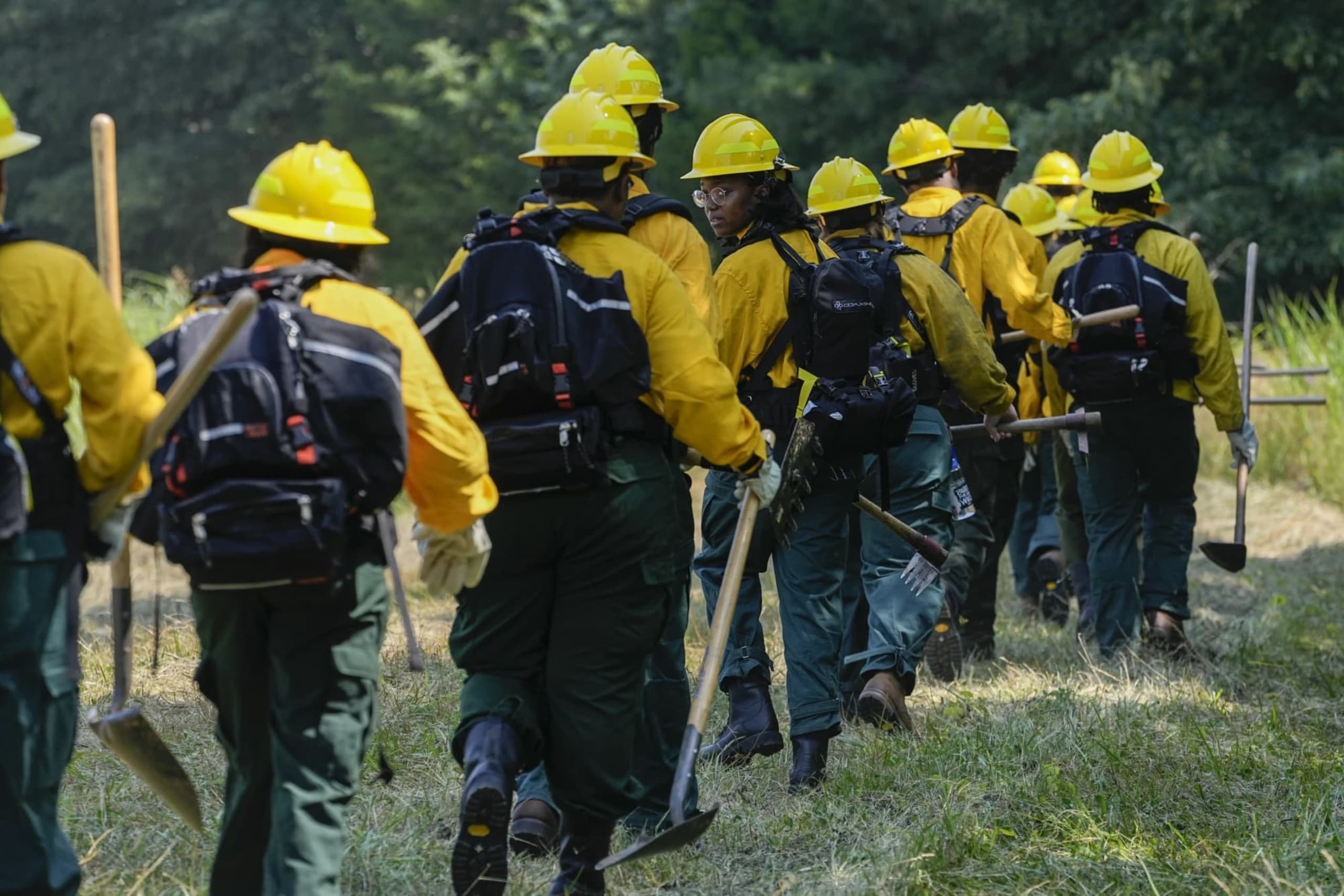
Love said Southern University and FAMU don’t have “forestry and fire” programs, but they do have natural resources sciences programs.
She said everybody brings something different to the table: Southern University is one of the only HBCUs with an urban forestry program, while FAMU excels in its drones program, which is used for wildfires.
“It’s like transformers,” she said with a chuckle, “just putting our heads together and our strengths and making one large impact.”
Forestry Opportunities for All Students at the Forest Service
Love said all students need to do to get involved in the consortium is to be enrolled at one of the partner universities and major in natural resources sciences.
Love emphasized that all USFS programs are equal opportunity; everyone is eligible. The USFS has targeted outreach at HBCUs, Hispanic-serving institutions, and tribal universities.

The USDA has an equity action plan because it wants the agency to look like the community it’s serving. Love said 1.9% African American degree-holders and 3.6% Hispanic degree-holders end up in forestry occupations.
The FireDawgs and the consortium aren’t the only forestry-related opportunities for students.
Other USFS initiatives transcend disciplines, like the Special Uses apprenticeship program, which is similar but is more for students working for the great outdoors rather than being in the great outdoors.
The Special Uses community in the USFS administers permits to harvest natural resources like roots, Christmas trees, and berries.
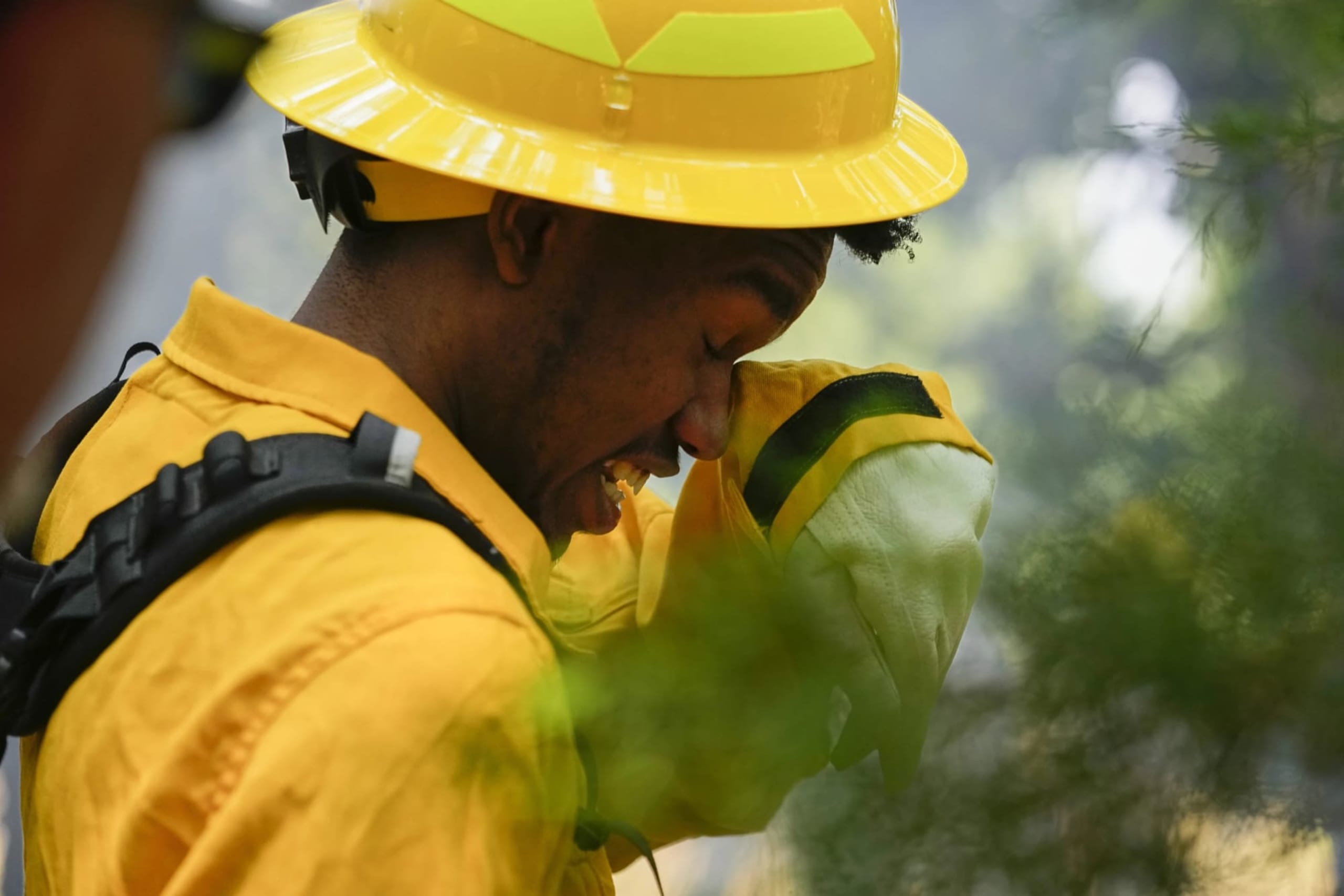
The USDA 1890 National Scholars Program, which Massey is a part of, is a full-ride major-indiscriminate scholarship with internship benefits that transfer to full-time USDA employment after graduation.
“We’re employing all mission critical occupations from computer science to accounting, to granting design to telecommunications and public affairs,” Love said. “So, we have something for everybody, no matter what the students are interested in.”
The USFS also works with the Thurgood Marshall College Foundation and the Hispanic Association of Colleges and Universities to find a place for any student who wants to work for the service.
“It’s so many avenues, so many options, whether you want to work for a short time just for the summer and get some experience or you would like to become a bonafide employee,” Love said. “We’ve got resource assistance programs, all sorts of things, short-term, long-term, all of it is paid, travel is paid, housing is paid, so there’s no out-of-pocket expenses for the students in any of the different scenarios.”
Love wants to replicate these programs nationwide at HBCUs, minority-serving institutions, and tribal universities. But forestry and fire initiative programs won’t work at every institution.
For example, Howard University makes more sense for a Special Uses program where USFS can reach out to political science and communications graduates.
“So we just saw an opportunity to do a better job to represent the public that we serve,” Love said. “So my job is totally driven by diversification.”

Photo Courtesy of Bradley Massey